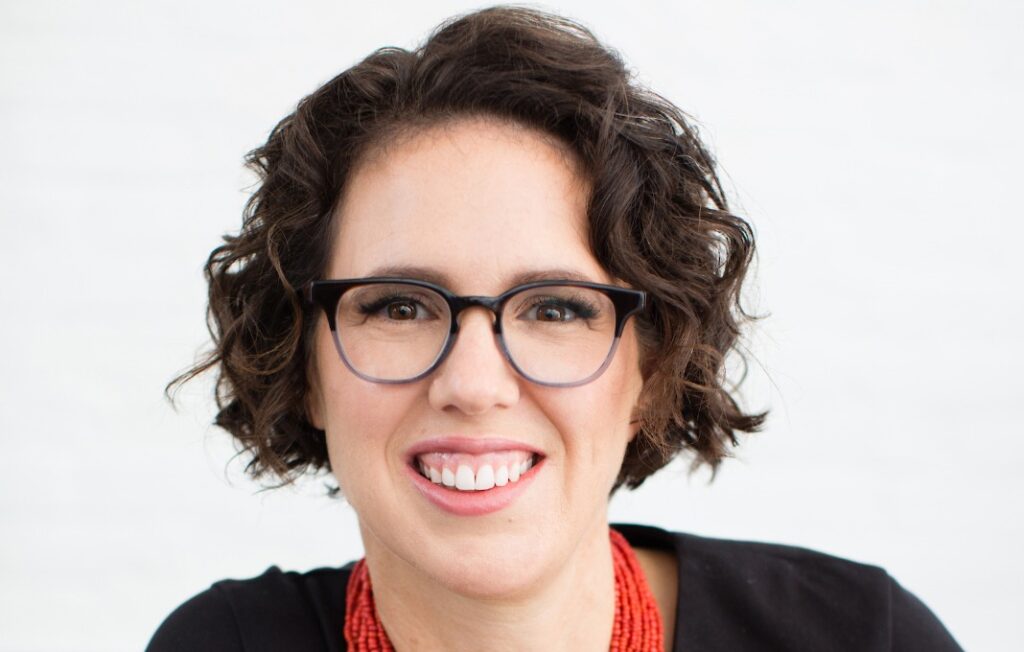At the height of the Great Resignation last year, many companies struggled to find indispensable skill sets to achieve strategic aims. The strain was a particular problem for CIOs implementing ambitious plans to transform operations and work models.
At the large investment management and insurance company Principal Financial Group, CIO Kathy Kay recalled that employee attrition in her IT organization was higher than normal figures. “The time to fill a job from the day it was posted to when a candidate accepted was 95 days,” said Kay.
By the end of last year, thanks to more targeted recruitment efforts matching job candidates’ career goals with internal training and other corporate initiatives, the Great Resignation’s impact had become less acute. “As we aligned employment with what candidates were looking for, the rate of attrition slowed down appreciably,” she said. In December 2022, the job fill rate at the publicly traded company, with $4.8 billion in 2022 net income, declined to 61 days.
Other IT leaders like Steve Miller at Steelcase, an American manufacturer of office furniture and solutions, agree that hiring desired tech talent is not as difficult as it was in 2021 and 2022. “It’s definitely not like the Great Resignation last year,” said Miller, CTO at the publicly traded company, with 11,800 employees and $3.2 billion in fiscal year 2023 revenue. “While there are still challenges, they’re nowhere near where they were.”
The challenges continue to daunt tech recruitment at other companies, whose CIOs and CTOs provided their varied perspectives. But by and large, the Great Resignation, a catchall phrase describing the 50.5 million people who quit their jobs in 2022, on top of the 47.8 million who called it a day in 2021, is losing steam. The big quit was driven largely by widescale confidence in finding another job. Since employers last year hired a record 76.4 million people and laid off only 16.8 million, confidence was rewarded.
Today is a different story. As perceptions of economic fragility deepen in the aftermath of the banking crisis and the Federal Reserve’s decision to raise interest rates a quarter point irrespective of the turmoil, optimism is in short supply. In recent months, following the layoffs of more than 120,000 employees by tech giants Google, Amazon, Microsoft, Salesforce and others, job hopping has slowed. Nevertheless, CIOs must still convince candidates that their IT organization offers what they seek.
StrategicCIO360reached out to five CIOs or CTOs to find out how the changing dynamics are playing out at their companies. Most are finding it easier to recruit desired skill sets, from data scientists, cybersecurity experts and AI application engineers to more traditional software coders and developers. But in winning over the job candidates, they have upped the ante in terms of compensation, training and career ascension.
Riding the Waves
At Intermountain Health, a nonprofit system of 33 hospitals, 385 clinics, 60,000 employees and $14 billion in 2022 revenue, chief digital and information officer Craig Richardville leads a sprawling IT organization composed of 1,800 tech professionals and counting. “We’ve been fortunate to have a stable workforce, with our turnover and retention rates in IT staying pretty static and qualified candidates not difficult to find,” said Richardville, estimating the turnover rate last year and so far this year at 4 percent.
He attributed his good fortune in attracting and keeping sought-after skill sets to a combination of “positive factors,” including a higher-than-average compensation, a culture based on openness and transparency, and the opportunity for IT staff to leverage cutting-edge technologies in their work on behalf of physicians and patients like AI, machine learning and bots.
“Recently, we deployed a conversational AI product called Ambient Clinical Intelligence (from provider Nuance) that interprets conversations between physicians and patients in a clinical setting,” said Richardville. “In the past, the clinician had to physically document the patient visit and related care and billing. The tool interprets the conversation and creates the medical notes, saving anywhere from 30 minutes to 90 minutes of work.”
Ambient Clinical Intelligence has machine learning capabilities, so when a clinician reviews the medical notes and makes a change in a word or two, the tool learns from the change when interpreting future physician-patient conversations.
Intermountain Health’s IT group also has deployed robotic process automation (RPA) solutions that reduce repetitive manual tasks (part of the company’s digital business transformation) and data analytics tools that assist physician decisions. “We’ve deployed a whole slew of analytics,” said Richardville. “As both an operating company and a research institution, we produce real-time data across the system. Using data analytics, we can help physicians make healthcare decisions based on science and evidence.”
The ability to work on such projects appeals to tech professionals, he said. Other draws include a hybrid work environment for IT employees and Intermountain Health’s culture of respect and caregiving. “The work we do in digital transformation and data analytics help change the experience for our patients and our caregivers, removing frustrations and creating joy,” he said.
One skill set that remains difficult to recruit is cybersecurity. Intermountain Health was one of multiple hospital and health systems whose website was taken down in a DDoS attack in January by a pro-Russian hacker group called Killnet. “They announced who would be hit before the attack, resulting in minimal disruption and nothing material across the industry,” Richardville said.
Nevertheless, the attack emphasized the importance of state-of-the-art cybersecurity. The challenge is the intense competition for these skill sets. Like other IT organizations experiencing the recruitment difficulties, Intermountain Health has shifted in part to a cybersecurity MSP (managed services provider) model. “MSPs are building competencies in our space, helping to offset the need for these high skills,” he said.
Always in Catch-up Mode
Talent recruitment is a never-ending quest at Publicis Sapient, a large digital business transformation consulting company with 20,000 employees across 53 offices globally. “Our mission is to help clients keep pace with technology changes in transforming their business,” explained Global CTO Raymond Velez. “Our growth is dependent on hiring people with skill sets in digital, data, AI and analytics to assist customers’ evolving business transformations.”
In a highly competitive IT talent market, that’s an ongoing challenge. Velez pointed to the company’s difficulties recruiting more data scientists in 2020. “We had the same goal that everyone else did, and the same problems hiring such in-demand skill sets,” he said. “In response, we decided to create a joint venture with a company that had 25 years of expertise in the field of data science, effectively working around the issue.”
Rather than a focus exclusively on recruitment of data scientists, the joint venture with Elder Research and another partner Tquila, an intelligent automation consultancy, provided this talent. The three parties launched a new consulting firm called Publicis Sapient AI Labs. “The AI and data science experts at the new firm will help our clients solve their business challenges with predictive analytics and other tools,” Velez said.
To improve recruitment at publicly traded company Verra Mobility, a global leader in smart transportation technology, Jason Rivera, who wears two hats as CIO and CTO, also shifted his recruiting strategy. Previously, the company promoted its work helping customers like municipalities, fleet operators, rental car companies and school districts comply with government safety regulations and other transportation-related mandates.
“We decided instead to emphasize that the work we do here in IT saves people’s lives,” said Rivera. “For example, we’ve provided integrated technology reducing the number of fatalities at intersections and school crossings. That message gets to why a job here can be not just cutting-edge work but also something with purpose.”
Smart transportation is a term comprising an extraordinary array of connected technologies—the internet, wireless, cloud computing, GPS, visual sensors, electronic devices and a city’s infrastructure like traffic lights—to make smarter, more coordinated and safer use of transport networks.
In helping customers achieve their smart transportation objectives, Verra Mobility employs a broad range of tech professionals like network engineers, software developers, DevOps engineers and advanced application support analysts, among many other IT skill sets. A glance at the company’s global job listings brought up dozens of IT job opportunities, several at the vice president level. “We’re always recruiting to make sure we have the pipeline backfilled,” Rivera explained.
The new recruitment messaging is making a difference in hiring. Other factors include compensation and internal mobility. “We pay very competitive salaries and provide project bonuses,” he said. “Our training programs are designed to expose people to new competencies across the company—not just technology but also in other parts of the business. I’m a big believer in the concept of ladders, climbing one ladder but also providing the opportunity to cross over and climb another ladder.”
His goal is to fill 50 percent of open jobs with internal staff. “When you do these things, you eliminate the reasons why people look elsewhere for jobs,” Rivera said.
The Right Fit
In reducing the time to hire at Principal Financial Group from 95 days to 61 days, CIO Kay chalks up the accomplishment to aligning available jobs with the interesting and challenging projects that appealed to candidates. To make the case to job applicants, teams were developed within IT to collaborate with the company’s internal recruitment organization. “We put together a small team of full stack engineers to work shoulder-to-shoulder with internal recruiting; we then did the same thing for other specific IT roles,” Kay explained.
By having bona fide IT specialists present during job interviews, some of the more esoteric questions a candidate might ask of an internal recruiter can be answered more comprehensively and personally by the tech professional. “We decided to shift from a recruitment focus on filling the talent pipeline to a laser focus on the types of hard and soft skills we needed,” she said.
The decision had an immediate effect on Principal Financial Group’s fill rate. A January 2023 pilot test program of the new interview process tallied an average 6.7 days from the day a candidate applies for a job to when the person accepts the offer, a pretty remarkable improvement that Kay attributes to a “better fit” between the candidate and the job.
Other attractions include several training programs created to reskill and upskill new recruits. In some cases, the training is offered by the company’s tech vendors like Amazon Web Services (AWS), Salesforce and others, which provide coursework in cloud computing, data analytics, engineering, etc. Said Kay, “Knowing a company offers wider career opportunities says something about its culture.”
Miller at Steelcase has a similar perspective. “People want jobs that fit them and offer an environment for success,” he said. “The questions I get asked in job interviews by candidates suggest they are curating our culture. They’re interested in the behaviors here that over time will drive success. While a flexible work policy drove much of last year’s conversations, nowadays they’re asking, `What about everything else?’”
Candidates’ top interest is a career beyond the IT organization. “They want to know if they will be supported and encouraged to find opportunities for career progression—not just in IT but outside it as well,” Miller explained. “They want to move to new jobs blending their technical capabilities with business acumen—without having to leave the company to do it.”
To provide these opportunities, Steelcase introduced a formal employee development program based on a critical thinking model. Miller described the training as akin to the trial-and-error processes designers use to solve problems, learning from failure to rapidly iterate and refine ideas, “often in conjunction with the customer in open dialogue,” he said. “By better understanding the customer’s needs, better solutions are created.”
One other retention strategy has helped slow the revolving door in IT talent. “Job candidates want assurance they’ll be personally connected to leadership and will not be some meaningless person with an empty name,” he said. “This requires an executive team that is visible, approachable and involved with the business.”








